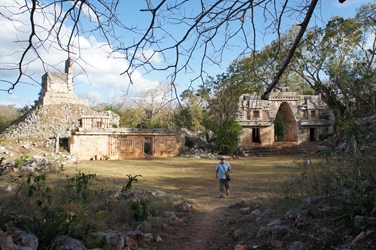
My search for the Coronado Trail began in October 2004 and ended in March 2019. Along the way I published eight reports, and all are included on this website.
These reports lay out the trail I propose for the expedition of Captain General Francisco Vázquez de Coronado, as well as the locations of Chichilticale, the Río San Juan, the Río Balsas, the Arroyo de la Barranca, the Río Frio, and the Río Bermejo, all mentioned in the written records. In addition, I have located two unspecified camps – one at Doubtful Canyon (Julian 23 June 1540 camp), another at Big Dry Creek (Minnie Bell site, Julian 27 June 1540 camp). The portion of the trail in the United States that I mapped extended from the Río San Pedro in Arizona to Hawikku in New Mexico. The trail that I mapped in Mexico included the location of Vacapa, which is San José de las Pimas. My adventure spread over nearly fifteen years. And that was enough. I am reminded of John Lloyd Stephens and Frederick Catherwood, who explored for Maya ruins in Central America and Yucatán from 1839 to 1842. In 1843, Stephens filed his final report. Upon departing his last site, he wrote, “I have now finished my journey among ruined cities. I know that it is impossible by any narrative to convey to the reader a true idea of the powerful and exciting interest of wandering among them… I will now bid farewell to ruins.” My feelings parallel his – though the search for the Captain General was exhilarating, I am finished with Coronado. But not everyone is or will be. In the future, most likely in the few years preceeding 2039, interest in the Coronado Expedition will intensify, this due to the 500th anniversary of that adventure. Hopefully, future searchers for Coronado will find my reports beneficial, and to them I offer some closing thoughts. Perhaps the most important factor in deliberations about the Coronado expedition is scale: it was huge. Thousands of people and livestock. Consequently, space and time are paramount rudiments for exploration considerations. The Following and Retreating Armies did not move as a single herd. Travelers were scattered and separated by days. The trail should be considered a corridor of presence, containing campsites all along it. The sizes of individual groups varied from dozens to hundreds, so space, that is, campground sizes, were both large and small. It follows that future searches should not be limited to large spots. I have presented a campground model that does not consider small camps. My model was for primary exploration purposes. Now that I have defined the trail, the model must be modified to include smaller camps. This opens the hunt to more quarry, which provides more opportunities for success. As for time, I have presented calendars predicting days between campsites and distances for travel days. Like my campground models, these calendars were for primary exploration purposes. Secondary exploration is now underway. The calendars should be revised to accommodate more camps, a variety of camp sizes, and reconsideration of travel time between camps. This increases the number of prospects, thereby enhancing chance for success. All explorers hope for godsend, a touch of good fortune along the way. To future searchers, I wish “Good luck to us all.” Nugent Brasher, San Felipe del Agua, Oaxaca de Juárez, Mexico.

